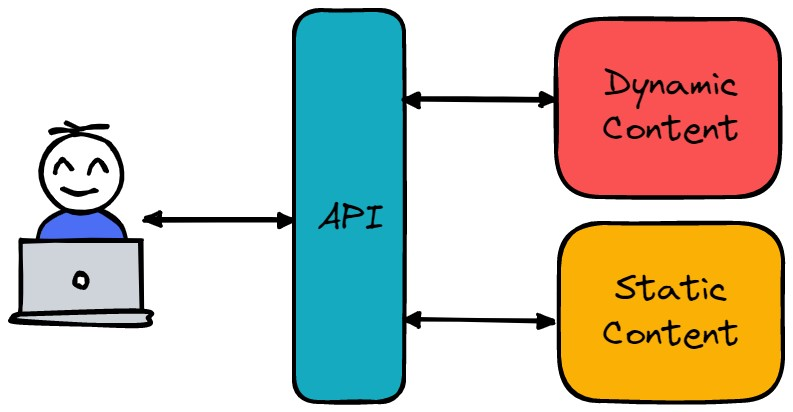Static Content Hosting
Description
Static content hosting is a technique for improving the performance of web applications by serving static content to users from locations that are geographically closer to them. This is typically achieved by using a content delivery network (CDN) or by hosting the static content on a separate server that is optimized for serving static files. By serving static content from a location that is closer to the user, the latency of the request is reduced, resulting in faster load times for the web application.
It reduces load on the main server, which can also improve the overall performance. By offloading the serving of static content to a separate server or CDN, the main server is free to handle dynamic requests, such as database queries or user authentication, without being bogged down by serving static files.
Diagram

When to Use
If there is a clear separation between static and dynamic content in your web application, static content hosting can be a great option. This is often the case for websites that have a lot of images, videos, CSS files, and JavaScript files that do not change frequently. By serving these static files from a separate server or CDN, you can improve the performance of your web application and reduce the load on your main server.
The biggest gains will happen when your users are geographically dispersed, as serving static content from a location that is closer to the user can significantly reduce latency and improve load times.
Advantages
For any web application that serves static content, static content hosting can provide several benefits:
- Deliver static, or rarely changing, content to users more quickly.
- Reduce load on the main server, improving overall performance.
- Supporting technologies have been around for decades, so the process is simple and well-understood.
Disadvantages
The main downsides of static content hosting are:
- It requires additional infrastructure, in many cases through a third-party service, which can add complexity and cost.
- Data consistency can be a challenge, as changes to static content may not be immediately reflected across all servers or locations.